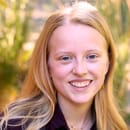Ladies and gentlemen, boys and girls, guys, gals, and non-binary pals, NaNoWriMo season is (almost) here! I am so psyched! (Imagine me literally bouncing with joy, throwing pom poms in the air.) I heckin’ love NaNoWriMo, but before my endless enthusiasm spills over into incomprehensible sentences, let me give an overview of what NaNoWriMo is, why I love it, and what to expect from me in the upcoming weeks.
So, what is NaNoWriMo? NaNoWriMo stands for National Novel Writing Month. The goal of NaNoWriMo is to write a novel — or 50,000 words — in the month of November. This averages to 1,667 words every day or 5,555 words every weekend. Anyone can participate in NaNoWriMo (it’s free!) and completing the 50,000 words is by no means a requirement. Writers can use the NaNoWriMo website to track their work, award themselves badges based on word count or “writer type,” and keep track of past novels (or attempted novels). The NaNoWriMo website also serves as a platform for writers to connect with other participants in local areas. Everything about NaNoWriMo is geared towards making November a month filled with low-stakes creative writing; perfection is not required.
So, what do you get if you “win” NaNoWriMo (i.e, write 50,000 words)? A novel! After completing NaNoWriMo, you will have the first draft a novel! That you wrote! Because of this, your other main reward is personal satisfaction. Writing 1,667 words each day for 30 days is no easy feat, and completing an entire month’s work is an amazing feeling. Other than a literal novel and a deep sense of personal validation, NaNoWriMo partners with organizations that give discounts to participants, often with greater discounts given to winners. Winners can move on to self-publish their novels, or simply bask in the glory of their Word document. In fact, you may recognize some titles that started as NaNoWriMo novels: Water for Elephants by Sara Gruen, The Night Circus by Erin Morgenstern, and Cinder by Marissa Meyer, for example.
NaNoWriMo was founded in 1999 by freelance writer Chris Baty. That year, Baty and 20 of his friends from the Bay Area each attempted to write a novel in the month of July. The next year, they switched the month November. While it started out a small group of friends with the wild goal of writing a book in a month, NaNoWriMo quickly expanded from the Bay Area to across the globe. In 2018, there were 306,230 NaNoWriMo participants from all over the world.
NaNoWriMo has transformed into more than just a month where friends band together in their attempts to write a novel. It is a 501(c)(3) nonprofit organization that “supports writing fluency and education” in students and writers. The Young Writers Program is a subsection of the NaNoWriMo organization that specifically supports writers under 18, as well as K-12 educators, as they participate in the month of writing. Young Writers are able to set personally challenging word limits under 50,000 words, as well as utilize special writing tools, such as the Dare Machine or Word Sprints, which help motivate writers during November. To join the Young Writers Program as an under-18 writer, simply enter your age when creating an account.
For educators, the Young Writers Program allows NaNoWriMo to be utilized in the classroom. NaNoWriMo provides educators with resources such as student workbooks, Common Core-aligned lesson plans, and free classroom kits. During NaNoWriMo, educators can use the on-site classroom that allows them to create discussion forums between students, monitor student’s novel progress, and edit students’ novels. Educators can also set class-wide writing challenges separate from the NaNoWriMo’s word goal.
2019 will be my fourth year participating in NaNoWriMo. I started in 2015 because my friend told about this wacky month of writing she had decided to participate in, and I thought, Huh, that sounds fun. Why not? Little did I know what I was getting myself into. Now, I’ll tell you a surprising fact about myself: despite my deep enthusiasm, after three of participating, I have never actually “won” NaNoWriMo. The all-time greatest number of words I have written in the month of November is 12,085. Novembers are notoriously busy for me, filled with finals, theater tech weeks, and Thanksgiving. Writing for two to three hours a day has never fit into my schedule. But that doesn’t matter to me. I love NaNoWriMo because I love to write. It has become an opportunity for me to dive into wacky plots, shed my worries about perfectionism, and simply write. What I create could be good. It could be bad. At the end of November, it doesn’t matter. You’re aiming for a rough draft, not a final product.
NaNoWriMo 2019 officially begins on November 1, 2019. Throughout October, I will be writing about NaNoWriMo Prep, including what you can do to prepare, what I find helpful, and what not to worry about. Come November, I will be attempting to write a novel.
You can learn more about NaNoWriMo and The Young Writers Program, as well as explore NaNoWriMo Prep on their websites.


